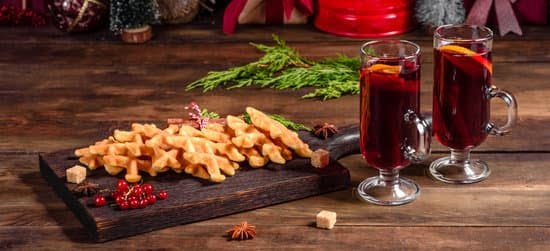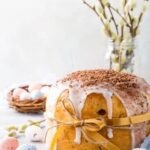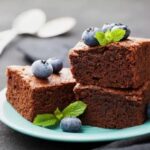Edible flower cake decorations add a touch of elegance and beauty to any confectionery creation. From ancient traditions to modern trends, the use of edible flowers in cake decorating has continued to captivate bakers and pastry enthusiasts around the world.
In this article, we will explore the history, types, preparation, creative ideas, tips for application, and sourcing of edible flowers for cake decorations. Whether it’s a wedding cake, birthday cake, or any other special occasion treat, incorporating edible flowers can elevate the aesthetic appeal of your baked goods.
The practice of using edible flowers for cake decorations dates back centuries, with different cultures embracing the art in their own unique ways. From traditional customs to contemporary designs, the versatility and elegance of these delicate floral adornments make them a popular choice for both professional bakers and home cooks alike. In this section, we will delve into the historical significance of edible flower cake decorations and how they have evolved into a modern culinary trend.
While there are numerous types of edible flowers that can be used for cake decorations, some stand out as popular choices due to their vibrant colors and distinct flavors. From roses and lavender to violets and more, each type of edible flower brings its own unique characteristics to the table when it comes to decorating cakes.
Throughout this article, we will explore the various types of edible flowers commonly used in cake decorating and how they can enhance the visual appeal and taste of your sweet creations.
The History of Edible Flower Cake Decorations
The tradition of using edible flowers to decorate cakes dates back centuries and spans various cultures around the world. In ancient times, people used flowers not only for their aesthetic appeal but also for their medicinal and culinary properties. For example, in East Asia, chrysanthemum petals were often used to infuse flavor into desserts, while in Europe, lavender and rose petals were commonly incorporated into confections.
During the Victorian era in England, the use of edible flowers for cake decorations reached new heights of popularity. Elaborate cakes adorned with delicate petals became a symbol of opulence and refinement. The practice also spread to other parts of Europe, where bakers experimented with different flower varieties and techniques for creating stunning floral designs on cakes.
In modern times, the tradition of using edible flowers for cake decorations continues to evolve. With a resurgence of interest in natural and organic ingredients, more and more home bakers and professional pastry chefs are turning to edible flowers as a way to add unique flair to their creations. Additionally, the availability of edible flowers at farmers’ markets, specialty stores, and online retailers has made it easier than ever for enthusiasts to explore this delightful decorating trend.
| Edible Flowers | Traditional Use |
|---|---|
| Roses | Incorporated into desserts for their sweet fragrance |
| Lavender | Used as a flavoring agent in baked goods |
| Violets | Added to confections for their vibrant color |
Types of Edible Flowers Used for Cake Decorations
When it comes to adorning cakes with edible flowers, there is an array of stunning blooms to choose from. Whether you opt for delicate roses, fragrant lavender, or vibrant violets, each variety brings its own unique beauty to your confection. Here are some of the most popular types of edible flowers used for cake decorations:
- Roses: With their soft petals and enchanting fragrance, roses are a classic choice for adding elegance to any cake design.
- Lavender: Known for its calming scent and lovely purple hue, lavender can bring a touch of sophistication and charm to your creations.
- Violets: These dainty flowers come in shades of purple, blue, and white, making them a delightful addition to springtime and floral-themed cakes.
- Pansies: With their cheerful “faces” and wide range of colors, pansies make for cheerful and eye-catching cake decorations.
- Calendula: Also known as marigolds, calendula blossoms add a pop of sunny color and a slightly spicy flavor to cakes.
When selecting edible flowers for your cake decorations, it’s essential to ensure that they have been grown organically without the use of pesticides or other harmful chemicals. Additionally, it’s important to verify that the flowers are indeed safe for consumption. Some varieties may be beautiful but not meant for consumption.
Incorporating a mix of these edible flowers in your cake designs can elevate the overall aesthetic and create a visual feast fit for any occasion. Whether you’re crafting a rustic wedding cake or whimsical birthday confection, the diverse array of edible flower options provides endless possibilities for creative expression in your baking endeavors.
How to Safely Select and Prepare Edible Flowers for Cake Decorations
When it comes to using edible flowers for cake decorations, it is crucial to ensure that the flowers are safe to eat and have been properly prepared. Here are some important steps to take when selecting and preparing edible flowers for cake decorations:
1. Research and identification: Before using any flower for cake decoration, it is essential to research and identify the specific type of flower. Some flowers are toxic and should never be used in food preparation. Look for reliable sources of information on edible flowers or consult with a professional florist or botanist.
2. Organic or pesticide-free: When selecting edible flowers for cake decorations, it is important to choose organic or pesticide-free varieties. Pesticides and other chemicals used in non-organic flowers can be harmful if consumed.
3. Safe handling and preparation: Once you have selected your edible flowers, it is crucial to handle them safely and prepare them properly for use on cakes. Remove the pistils, stamens, and sepals from the flowers as these parts can have a bitter taste or undesirable texture.
4. Wash thoroughly: Before using the edible flowers on a cake, make sure to wash them thoroughly to remove any dirt, insects, or debris. Gently rinse the flowers under cool water and pat them dry with a paper towel before placing them on the cake.
By following these guidelines for safely selecting and preparing edible flowers for cake decorations, you can ensure that your floral creations not only look stunning but are also safe to consume.
Creative Ideas for Incorporating Edible Flowers Into Cake Designs
When incorporating edible flowers into cake designs, there are a variety of creative ideas to consider. One of the main decisions to make is whether to use fresh or dried flowers for your cake decorations. Each option offers its unique benefits and can create stunning effects on your baked creations.
Fresh Flowers
Using fresh edible flowers for cake decorations can add a touch of natural beauty and vibrant colors to your designs. Fresh blooms such as roses, violets, and lavender can bring a delicate and fragrant element to your cakes. When choosing fresh flowers, it’s important to ensure that they are organically grown and free from pesticides. It’s also essential to carefully wash and inspect each bloom before applying them to the cake.
Dried Flowers
Dried edible flowers can provide a different aesthetic for cake decorations, offering a more subtle and vintage-inspired look. Dried flowers like chamomile, calendula, and rose petals can bring an air of elegance and timelessness to your cake designs. Dried flowers are also easier to handle and arrange on the cake without wilting or losing their shape. They are also longer-lasting than fresh flowers, making them a practical choice for certain occasions.
Whether you choose fresh or dried edible flowers for your cake decorations, it’s important to consider the overall design aesthetic and theme of the event. Fresh blooms may be well-suited for spring or summer celebrations, while dried flowers could be perfect for autumn or winter affairs. Experimenting with both options can help you determine which type of edible flower best suits your creative vision for your cakes.
Tips for Applying Edible Flower Cake Decorations
When it comes to using edible flowers as cake decorations, the arrangement is key. You want to create a visually stunning display that enhances the overall look of your cake. Start by selecting flowers that are in good condition and free from pesticides. It’s important to carefully clean and dry the flowers before use.
When arranging edible flowers on a cake, consider the color scheme and size of the blooms. For a simple yet elegant look, place individual blooms around the perimeter of the cake or create a cascading effect down one side. If you’re using multiple types of flowers, experiment with layering them for a more dynamic appearance.
Preserving edible flower cake decorations requires some care to ensure they stay fresh and appealing. To keep fresh flowers looking their best, refrigerate the cake until shortly before serving. If you prefer to use dried flowers for longer-lasting decorations, press them between paper towels under a heavy book for several days before applying them to the cake.
Incorporating edible flower cake decorations can elevate any special occasion dessert. From weddings to birthdays, these delicate blossoms bring natural beauty and artistry to your confectionery creations.
| Edible Flower Tips | Details |
|---|---|
| Cleaning Flowers | Ensure flowers are pesticide-free and carefully cleaned before use |
| Arrangement Ideas | Consider color scheme, size, and layering for an appealing display |
| Preservation Methods | Refrigerate cakes with fresh flowers; Press and dry flowers for longer-lasting decorations |
Edible Flower Cake Decorations for Different Occasions
When it comes to choosing edible flower cake decorations, the occasion plays a significant role in determining the type of flowers and the design. Whether it’s a wedding cake, a birthday cake, or any other special event, incorporating edible flowers into the design adds a touch of elegance and natural beauty. Below are some creative ideas for using edible flower cake decorations for different occasions.
Wedding Cakes
For wedding cakes, edible flower cake decorations are a popular choice due to their romantic and whimsical appeal. Roses, peonies, and lavender are often used to create stunning floral arrangements on wedding cakes. Fresh flowers can be strategically placed between tiers or cascading down the sides for a breathtaking effect. Dried flowers can also be used to create a more subtle, vintage look that complements the overall wedding theme.
Birthday Cakes
For birthday cakes, edible flower cake decorations can add a pop of color and uniqueness to the design. Bright and vibrant flowers like daisies, pansies, and violas can be used to create cheerful arrangements on birthday cakes. Fresh flowers can be paired with colorful frosting or fondant accents to celebrate birthdays in style. Dried flowers can also be incorporated into the design for a more sophisticated and delicate look.
Other Special Occasions
Edible flower cake decorations can also be used for various other special occasions such as anniversaries, baby showers, bridal showers, or graduation parties. Depending on the theme and color scheme of the event, different types of edible flowers can be selected to complement the overall aesthetic of the celebration. From sophisticated floral arrangements for anniversary cakes to playful and whimsical designs for baby shower cakes, edible flowers offer versatility for all kinds of special occasions.
Incorporating edible flower cake decorations into different occasions allows for endless creativity and personalization when it comes to designing beautiful and memorable cakes. Whether it’s a formal wedding reception or a casual birthday party, using edible flowers adds an extra touch of elegance that will surely impress guests and leave a lasting impression.
Where to Source Edible Flowers for Cake Decorations
When it comes to sourcing edible flowers for cake decorations, there are a variety of options available to bakers and pastry enthusiasts. Local suppliers such as farmers’ markets, specialty grocery stores, and floral shops often carry a selection of edible flowers that can be used to adorn cakes and other sweet treats. These local suppliers may offer freshly picked blooms that are perfect for adding a touch of natural beauty to any confection.
For those who may not have access to local suppliers or are looking for a wider variety of edible flowers, online options provide a convenient solution. There are numerous online retailers that specialize in selling edible flowers specifically for culinary use. This allows bakers to browse through an extensive assortment of blooms from the comfort of their own home and have them conveniently delivered right to their door.
In addition to purchasing ready-to-use edible flowers, some individuals may choose to grow their own at home. By cultivating a garden of edible flowers, bakers can ensure access to fresh and organic blooms whenever needed.
This option allows for complete control over the type and quality of the flowers used for cake decorations, providing an extra level of customization and personalization to baked goods. Regardless of the method chosen, having access to a reliable source of edible flowers is essential for those looking to incorporate these delicate blossoms into their cake designs.
Conclusion
In conclusion, edible flower cake decorations offer a versatile and elegant way to enhance the beauty of any cake. From ancient traditions to modern trends, the use of edible flowers in cake decorating has evolved over time, adding a touch of sophistication to special occasions. With a wide variety of edible flowers to choose from, including roses, lavender, violets, and more, there are endless creative possibilities for incorporating these natural adornments into cake designs.
When sourcing edible flowers for cake decorations, it is important to safely select and prepare them to ensure they are free from pesticides and safe for consumption. Whether using fresh or dried flowers, careful arrangement and layering techniques can create stunning visual effects on cakes. Additionally, preserving edible flowers properly will extend their lifespan as decorative elements.
Whether it’s a wedding cake, birthday cake or any other special occasion, edible flower cake decorations can add a unique and memorable touch to the dessert. Local suppliers and online options make it easy to source these delicate floral adornments, allowing anyone to experiment with incorporating them into their own baking creations. Overall, embracing the versatility and elegance of edible flower cake decorations opens up a world of possibilities for both amateur and professional bakers alike.
Frequently Asked Questions
What Are the Best Edible Flowers for Cake Decorations?
The best edible flowers for cake decorations are roses, violets, pansies, and lavender. These flowers not only add a pop of color to the cake but also bring a delicate floral flavor.
What to Use to Make Edible Cake Decorations?
Edible cake decorations can be made using fondant, gum paste, modeling chocolate, or edible ink printed images on wafer paper. These ingredients allow for intricate designs and beautiful details on cakes.
What Flowers Are Safe to Decorate a Cake With?
Safe flowers to decorate a cake with include roses, marigolds, pansies, violets, sunflowers, lavender, and daisies. It’s important to ensure that the flowers have not been treated with pesticides or other harmful chemicals before using them for decoration.

Welcome to our cake decorating blog! My name is Destiny Flores, and I am the proud owner of a cake decorating business named Cake Karma. Our mission is to provide delicious, beautiful cakes for all occasions. We specialize in creating custom cakes that are tailored specifically to each customer’s individual needs and tastes.





